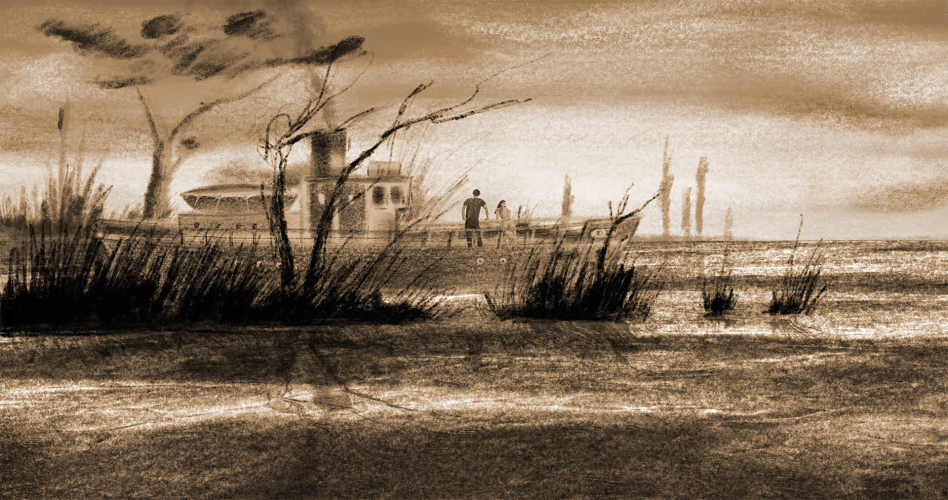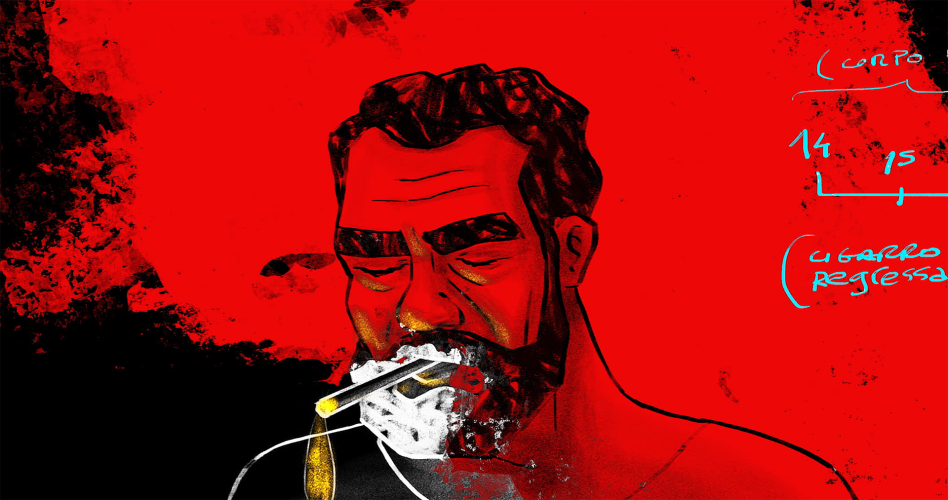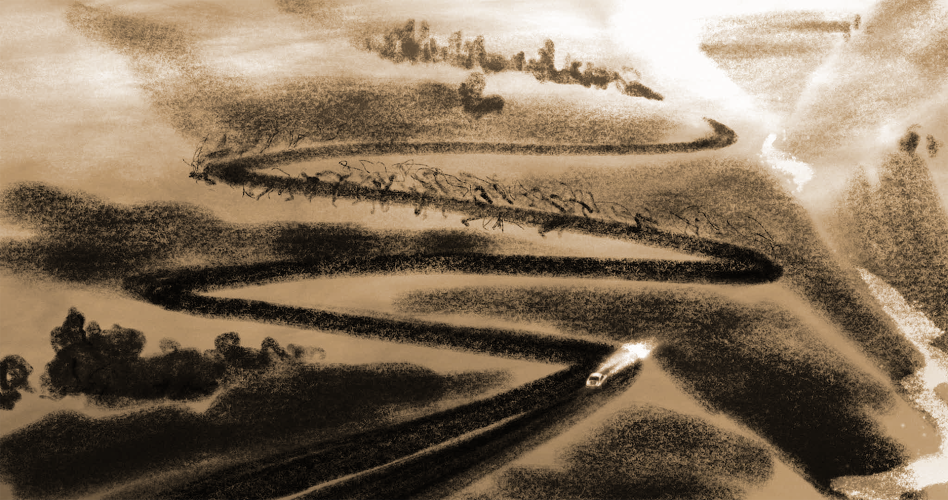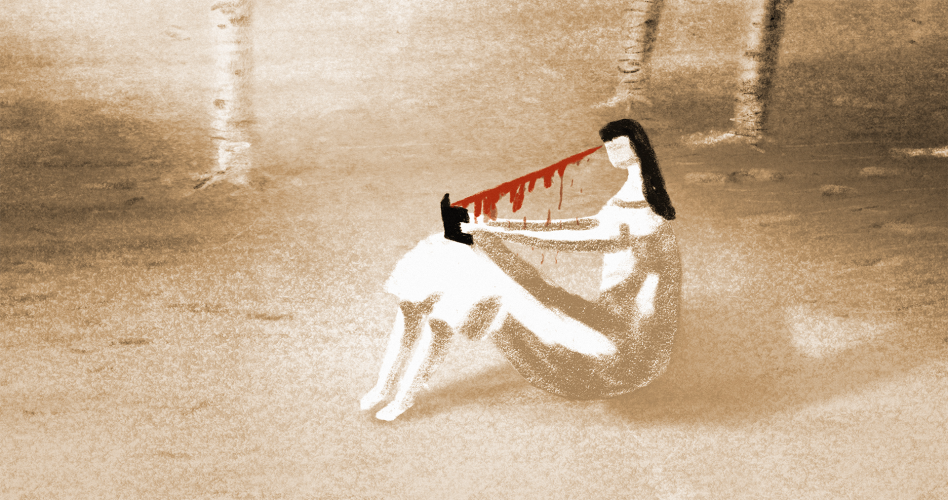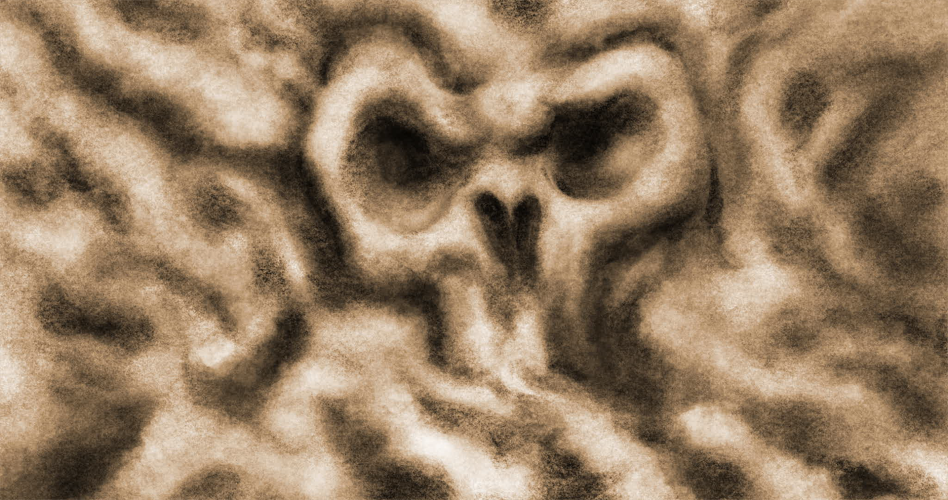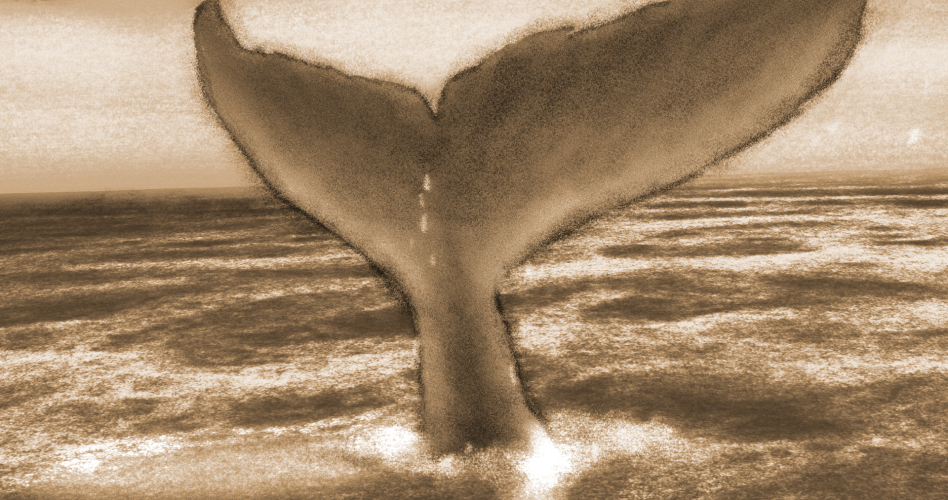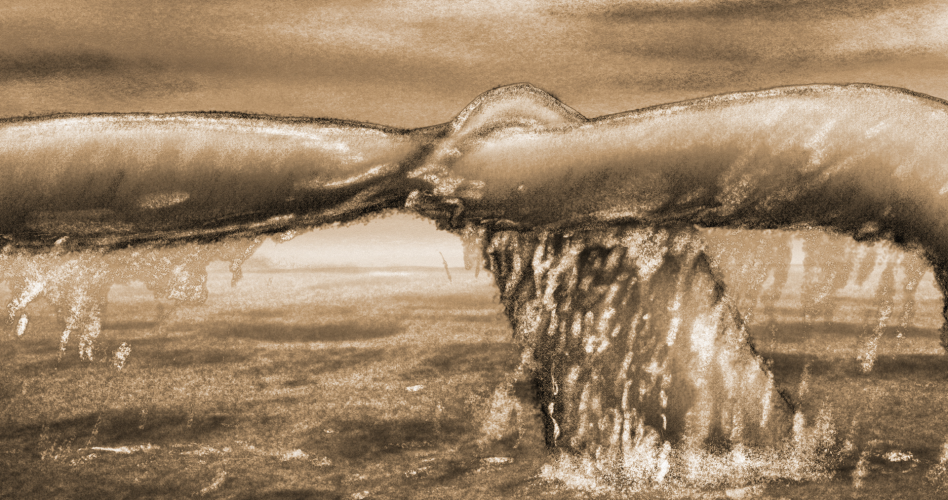10’ animated short film by Nuno Amorim and Vanessa Ventura
A man (Says) and a woman (Said) confront themselves, through the writing of a short script, with some of their past, present and future ghosts, projecting their worries and differences on the journey of a younger couple, She and He, possibly their alter egos.
Un homme (Dis) et une femme (Dit) se confrontent, à travers l’écriture d’un scénario, avec quelques fantômes de leur passé, présent et futur, projetant leur inquiétudes et différences dans un voyage d’un couple plus jeune, ELLE e IL, possiblement leur alter egos.
Note d’intention des auteurs
Le road-movie est un genre assez usuel, qui sert des récits construits sur une de deux trajectoires (ou les deux): soit les protagonistes sont dans un processus d’évasion urgent, soit ils répondent à l’impulsion de partir à la recherche de réponses. Dans ce petit récit, un couple de personnages-auteurs, dont la liaison semble accuser une certaine fatigue, réfléchi librement sur le processus de création qui veulent appliquer au sujet du film, et construit un scénario sur un voyage d’un couple qui part à la recherche du temps et des émotions perdus. Dans ce voyage ils sont confrontés à des images de leur passé, des projections de leur avenir, et la catharsis les emporte dans une dimension surréaliste, même si à la fin ils restent sans réponse.
Disons que c’est un film immersif, qui est construit sur une idée de réalité et d’illusion, introduisant le processus de création comme thème, pour le questionner, mais aussi pour confondre les attentes du créateur, déranger le jeu des routines et des rôles que chaque personnage doit représenter.
C’est aussi un film sur la recherche du sens et la reconnaissance tardive qu’il est à peine le fruit du hasard et de l’absurdité.
Le film se déroule sur deux niveaux, un apparemment “réel”, à l’intérieur d’une maison où deux personnages DIT et DIS écrivent et dessinent un scénario; et un autre niveau, fruit de l’imaginaire de ces premiers personnages, où se déroule une seconde action avec deux autres personnages, plus jeunes que les premiers, ELLE et LUI, qui ne connaissent pas le script et suivent ensemble dans un voyage non linéaire.
DIT et DIS ont des conceptions différentes du scénario, lui il est plus conventionnel et il se sers trop des références, en se perdant un peu, elle est plus incohérent et libertine. Pendant le développement des personnages fictifs (ELLE et LUI), cette différence s’accentue, se reflétant dans la manière dont sont représentés ces personnages. Elle et Lui n’apparaissent jamais bien définis, sauf quand c’est un plan de détail, et s’évanouissent dans des silhouettes dans les plans plus ouverts.
Celui est un film expérimental, sur deux dimensions qui s’interpénètrent et s’influencent, de tel sorte que ce n’est pas toujours possible de distinguer ce qui est «réel» ou imaginaire.
A la manière d’un film noir, où la tension se résout en métamorphoses progressives qui s’arrêtent dans un point de non-retour, tel le trajet de l’antihéros, le voyage termine devant où comme un naufrage dans un désert. Sans un ordre précis, nous découvrons, au long du voyage, des hésitations et des peurs qui abattent les personnages, captifs d’eux-mêmes et de leur façon de gérer le temps qui passe et la recherche d’un sens pour la vie et pour l’amour.
Du point de vue plastique/artistique, nous prétendons que l’image ait une touche réaliste mais simultanément fuyante, se transformant par moments dans une animation plus abstraite ou expressionniste.
Les transitions entre univers et leurs interpénétrations sont inspirées par la tradition de la pré-animation (jouets optiques) ainsi que par des dispositifs capables de crée des illusions. Le son joue un rôle important dans ce jeu de délusion que ce passage entre univers nous porte, dans où le film se déplace, soulignant parfois, contrastant d’autre, le développement visuel de l’action. L’intrusion des voix de DIT et DIS dans le domaine de la fiction, ainsi que dans l’environnement sonore de l’univers fictif, introduit une dimension multiple et une distance nécessaire pour joindre l’ensemble du film.
Au niveau musical, il y aura aussi une ligne expérimentale, concrète et abstraite, non illustrative, introduisant ici et là, ironiquement ou redondant, l’une ou l’autre note apparemment plus conventionnelle, bientôt brisée par le ton général du film.
The road movie is a recurrent film genre on the service of narratives that imply one of two possible trajectories (or both): or the protagonists are in an urgent run away process, or they are following an impulse to leave in a search for answers. In this small plot, a couple of characters /authors, whose relationship seems to show evidences of wastage, loosely reflect upon the creative process that they want to apply to the theme of a film, building a sinuous script about a couple that undertakes a journey hoping to retrieve past emotions and moments of their life together, on a path where they will be confronted with images of their past, insights of their future. A catharsis in a surreal dimension that lead us to an ending with no answers.
In a certain way it is an immersive film, built upon a perspective both real and illusive, summoning the creative process, not only to question it but also to elude the expectations of the author, scrambling the daily routines and the roles each character is lead to perform.
It is also a film about a quest for meaning and about the late acknowledgement that that arises basically from pure chance and absurdity.
The film unfolds before us in two separate levels, one supposedly “real”, inside a house where two characters, Say and Said, draw and write a script; and another, at the imaginary level of these two characters, where a second set of actions takes place involving two other characters, younger than the first, She and He, that not knowing the script undertake together a non linear journey.
Say and Said have different conceptions of the script. He has a more conventional approach, somehow corseted by his countless references. She is more libertine but also incoherent. While searching for the two fictional characters in the script (She and He), the difference between them grows, thus influencing the how those fictional characters are represented: well define when highlighted in the close-ups and fading as archetypes, almost silhouettes, in the wide shots.
The cinematic approach tends to be experimental, where the two dimensions (the real and the imaginary) are so interpenetrated and influence themselves to the point where one can’t tell which is which.
Mimicking film noir features, where tension is settled through progressive metamorphosis until a no return situation, like an antihero’s path, the journey ends with a shipwreck on a desert. The hesitations and fears that tear apart the characters reveal themselves along the journey in an imprecise order. Each character is captive of itself and of the way they deal with time and the search of any meaning for their life, for love.
From a visual and graphic standing, the animation will tend to have a realistic approach, but simultaneously and seldom assuming an abstract and expressionist look. Inspired in the comic books from the 40’s and 50’s, graphically high contrasted and with an hatched treatment, in an intend to approach the lightening of the movie studios from the first half of the twentieth century.
The transitions between universes and its interpenetrations are inspired in the optical devices from the pre-cinema (optical toys). The sound when creating the atmosphere of situations and places will have a very important role in the elusive play set and universes where the film takes place, either strengthening either running against the visual unfolding of the action. The meddling of the voices of Say and Said within the fiction as well as the sound of atmospheres will introduce multiple readings and dimensions to film.
The musical composition will have also an experimental approach, concrete and abstract, non illustrative. However, an apparently more conventional inserts will be introduced from time to time, ironically or eventually redundant, to be broken by the general tone of the film.
Estimated budget: 136.500,00 €
Secured financing: 109.200,00 €
Release date: 2020
[2019] Co-Productiom Forum – Brussels Short Film Festival (selected for pitching session)





